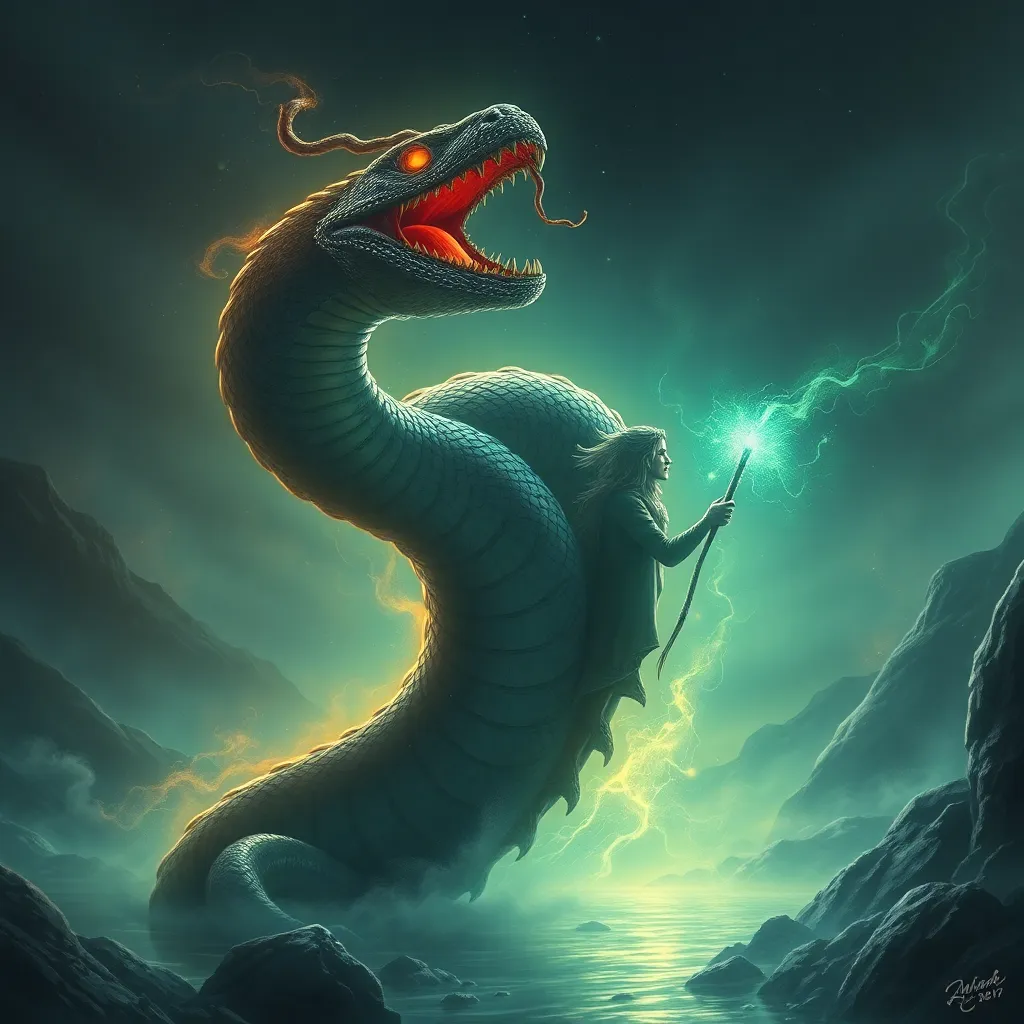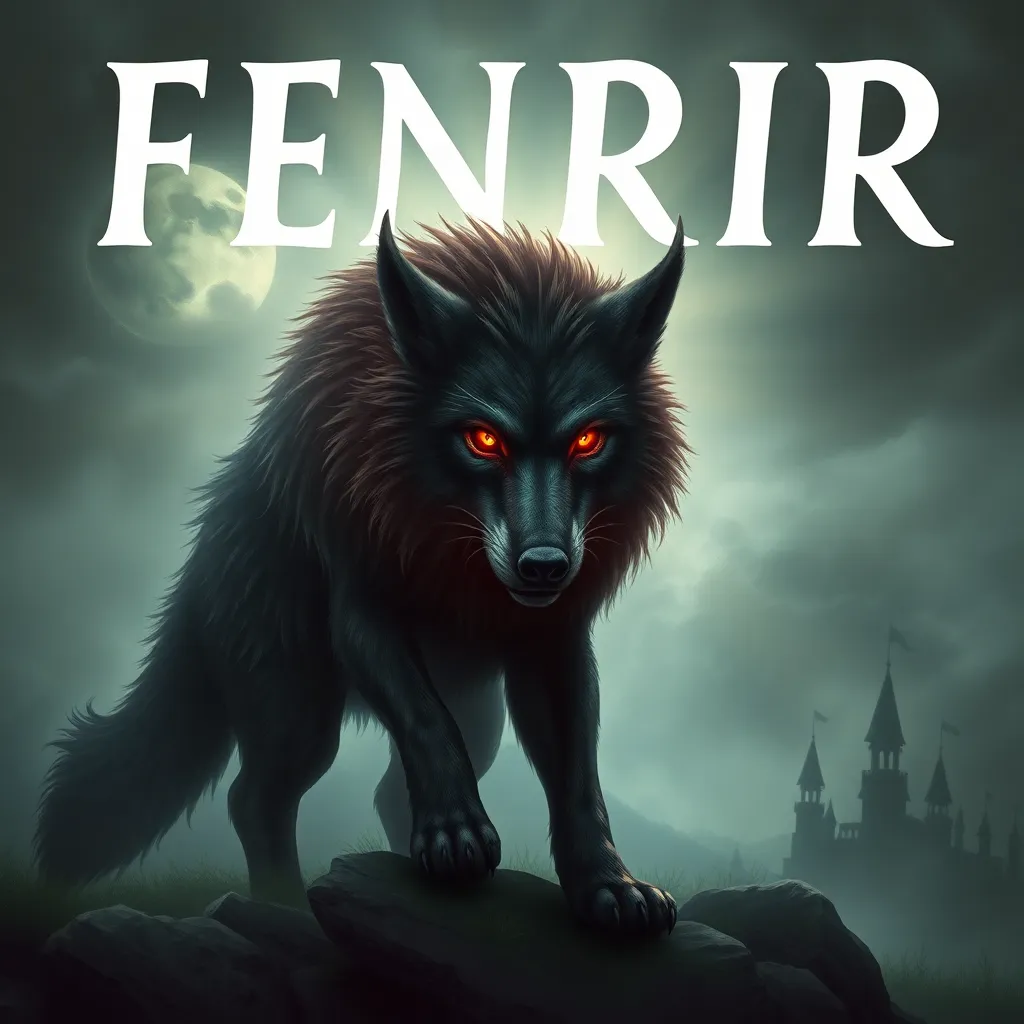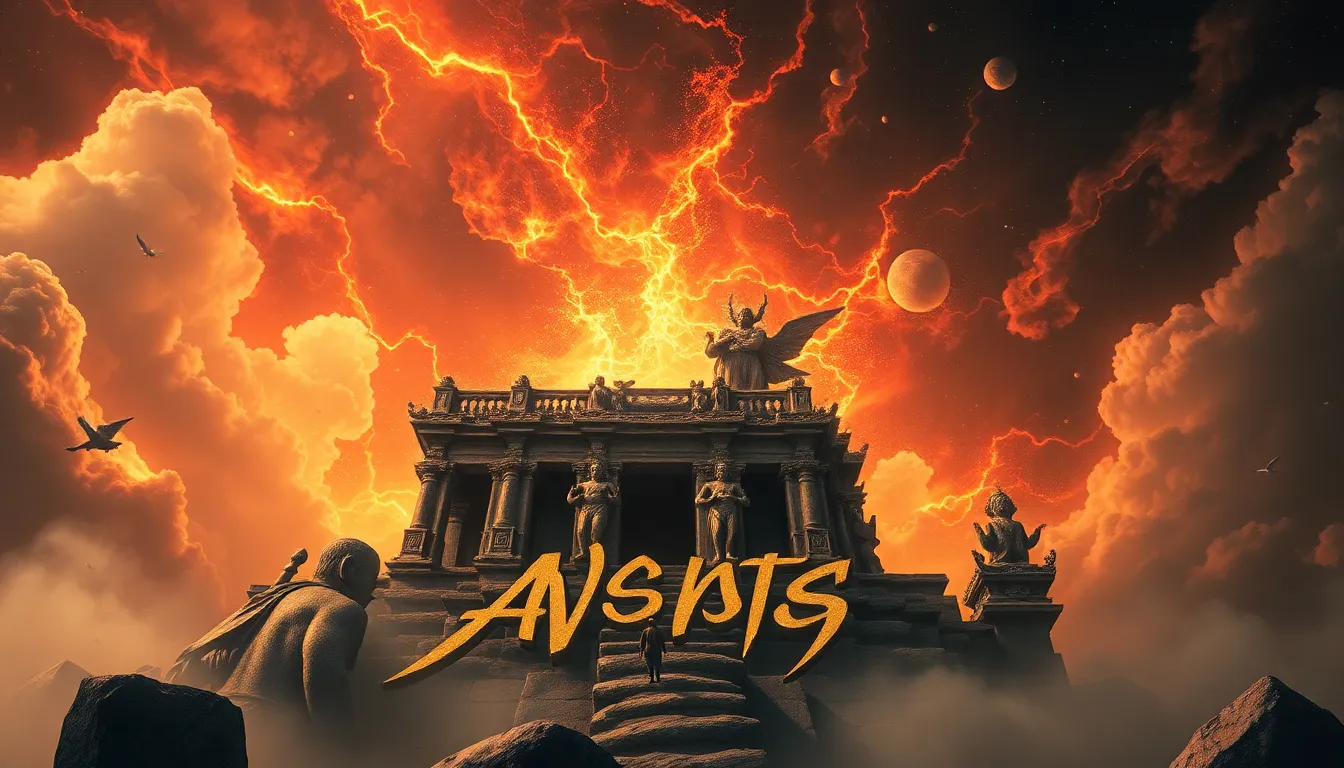The Serpent and the Giant: Jörmungandr’s Relationship with Loki in Norse Lore
I. Introduction
Norse mythology is a rich tapestry of gods, giants, and mythical creatures, where each narrative intertwines with the fate of the cosmos. Among the most fascinating figures in this lore are Jörmungandr, the Midgard Serpent, and Loki, the trickster god. Their relationship is one of complexity, filled with themes of chaos, destiny, and the cyclical nature of life and death. Understanding their connection enhances our appreciation of Norse mythology’s depth and the narratives that shape it.
II. The Origins of Jörmungandr
Jörmungandr, also known as the Midgard Serpent, is one of the children of Loki, born to the giantess Angerboda. This lineage is significant, as it ties Jörmungandr directly to the giants, a race often in conflict with the Aesir gods. The origins of Jörmungandr can be traced back to:
- Birth and lineage: Jörmungandr is one of three monstrous offspring of Loki and Angerboda, alongside Fenrir, the wolf, and Hel, the goddess of the underworld.
- Connection to Loki and the Aesir: Loki’s relationship with the Aesir is complicated; he is both a blood brother to Odin and a source of mischief and chaos.
- The prophecy surrounding Jörmungandr: It is foretold that Jörmungandr will play a crucial role in Ragnarök, the end of the world in Norse mythology.
III. Loki’s Role in Norse Mythology
Loki is one of the most enigmatic figures in Norse mythology. His character embodies the duality of creation and destruction. Key aspects of Loki include:
- Overview of Loki’s character and attributes: Loki is known for his cunning intelligence, shape-shifting abilities, and unpredictable nature.
- Loki’s relationships with other gods and beings: His ties with the Aesir, especially Odin and Thor, highlight his role as both an ally and an adversary.
- The duality of Loki as both helper and trickster: While he aids the gods in their quests, he also orchestrates events that lead to chaos and destruction.
IV. The Bond Between Loki and Jörmungandr
The bond between Loki and Jörmungandr is one of father and son, but it transcends the typical familial relationship. Their connection is significant for several reasons:
- How Loki became Jörmungandr’s father: Loki’s union with Angerboda brought forth Jörmungandr, signifying the mingling of godly and giant blood.
- The significance of their relationship: Jörmungandr represents the chaos inherent in Loki’s nature, and their bond reflects the tension between order (the Aesir) and chaos (the giants).
- Exploration of themes of chaos and order: Their narrative explores how chaos can arise from creation, leading to inevitable destruction.
V. The Symbolism of Jörmungandr in Norse Lore
Jörmungandr is a powerful symbol within Norse mythology, representing various themes and ideas. His significance is multifaceted:
- Jörmungandr as a representation of the Midgard Serpent: The serpent encircles Midgard, the world of humans, symbolizing the interconnectedness of all realms.
- Symbolic meanings of the serpent in mythology: Serpents often signify danger, chaos, and the unknown, embodying the primal fears of humanity.
- Jörmungandr’s role in the cosmic battle during Ragnarök: He is destined to clash with Thor, leading to their mutual destruction, representing the cyclical nature of existence.
VI. The Prophecy and Fate of Jörmungandr and Loki
The destinies of Jörmungandr and Loki are intricately tied to the prophesied events of Ragnarök. These narratives shape their fates:
- The prophesied events of Ragnarök: It is foretold that during Ragnarök, Jörmungandr will rise from the ocean and engage in a fierce battle with Thor.
- The significance of Loki’s eventual fate: Loki’s betrayal of the gods leads to his punishment and eventual release during Ragnarök, marking his role in the cataclysm.
- Jörmungandr’s role in the apocalyptic battle: In the final confrontation, Jörmungandr’s death signifies the end of the old order and the birth of a new world.
VII. Interpretations and Legacy
The relationship between Jörmungandr and Loki has resonated through time, leading to various interpretations and adaptations:
- Modern interpretations of Jörmungandr and Loki’s relationship: Contemporary works often explore their bond as a metaphor for duality and conflict within oneself.
- Influence on popular culture and media: From comics to films, the characters have been reimagined, reflecting modern values and conflicts.
- The enduring legacy of these characters in contemporary narratives: Jörmungandr and Loki continue to inspire new tales, illustrating the timeless nature of their stories.
VIII. Conclusion
In summary, the relationship between Jörmungandr and Loki is a central theme in Norse mythology, embodying the complex interplay of chaos and order. From their origins to their prophesied fates, their narrative encapsulates the cyclical nature of existence and the inevitability of conflict. As we reflect on their intertwined destinies, we appreciate the depth and richness of Norse lore, recognizing how these characters continue to influence and inspire our understanding of myth and its role in human experience.



